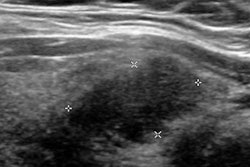Dear AuntMinnie Member,
The American Cancer Society released its annual report on cancer in the U.S. today, and it was a classic case of good news/bad news. The good news is that cancer mortality continues its long trend downward; the bad news is that lung cancer survival hasn't improved as individuals who are eligible for CT lung screening aren't getting scans.
The death rate from cancer in the U.S. has fallen by 26% over the past 20 years, according to the report. Major declines have been seen in mortality rates for all major cancers, led by a 45% drop in lung cancer mortality among men and a 39% decline in breast cancer mortality in women.
But the survival rate for lung cancer is stuck at 5%, primarily because only about 4% of high-risk smokers who are eligible to get CT lung screening actually follow through with the scans. Learn more about the report's findings by clicking here.
While you're in our CT Community, be sure to check out this story on how researchers in Finland used radiation dose tracking software to analyze how much dose was received by kids who get CT scans in the emergency room.
The risks of risk-based breast screening
It's become fashionable to promote the adoption of risk-based breast screening as an alternative to the one-size-fits-all approaches typically used in population-based screening programs. But a new study in our Women's Imaging Community indicates that risk-based screening has risks of its own.
Researchers from the University of Michigan found that using a risk-based approach to determine which women should undergo breast screening would miss many cancers. They found that most of the cancers detected in a sample population of women with breast cancer occurred in women with no risk factors, such as a personal history of breast cancer or dense breast tissue.
Learn more by clicking here, or visit the community at women.auntminnie.com.
Guide for ob/gyn US
Finally, visit our Ultrasound Community for news on a new set of guidelines issued by the American Institute of Ultrasound in Medicine designed to improve the use of ultrasound in obstetrics and gynecology. Read all about it by clicking here, or go to ultrasound.auntminnie.com.



















